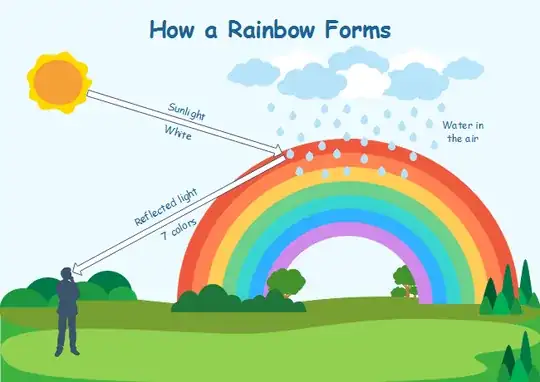Single water droplet gives rise to formation of only a small part of rainbow. Is that part formed in between observer and droplet or behind the droplet and not between them?
2 Answers
The rainbow isn't a "bow." It's a cone that extends from your eye to infinity. Anywhere a raindrop happens to pass through the "blue" layer of the cone, no matter how near to you or far from you, if it happens to be illuminated by sunlight, then it reflects a portion of the "blue" wavelengths back toward your eye. Same goes for each of the other color layers.
Of course, the water droplets don't know where your personal eyeball is located. What really happens is, each droplet is sending back its own cone-shaped reflection of the sunlight. But whenever a raindrop happens to pass through the "blue" layer of the virtual cone that you see, that's the exact moment when part of the actual cone of blue light that it is reflecting happens to hit your eye.
The rainbow isn't before or after the raindrops. It is the raindrops reflecting sunlight back at you.
- 17,057
Let me borrow a diagram, taken from here.

Water droplets on one extreme of the picture refract, reflect and disperse the light, the sun must be in the opposite direction to shine on the droplets. In order to see the rainbow, an observer must look up (in the direction of the droplets) at an angle of about 42 degrees, with the sun located behind the observer.
The light coming from the droplets is the rainbow, the rainbow has no location. As for how each droplet is contributing to the rainbow check the answer to this question: What do individual rainbow-forming droplets look like?.
- 6,886